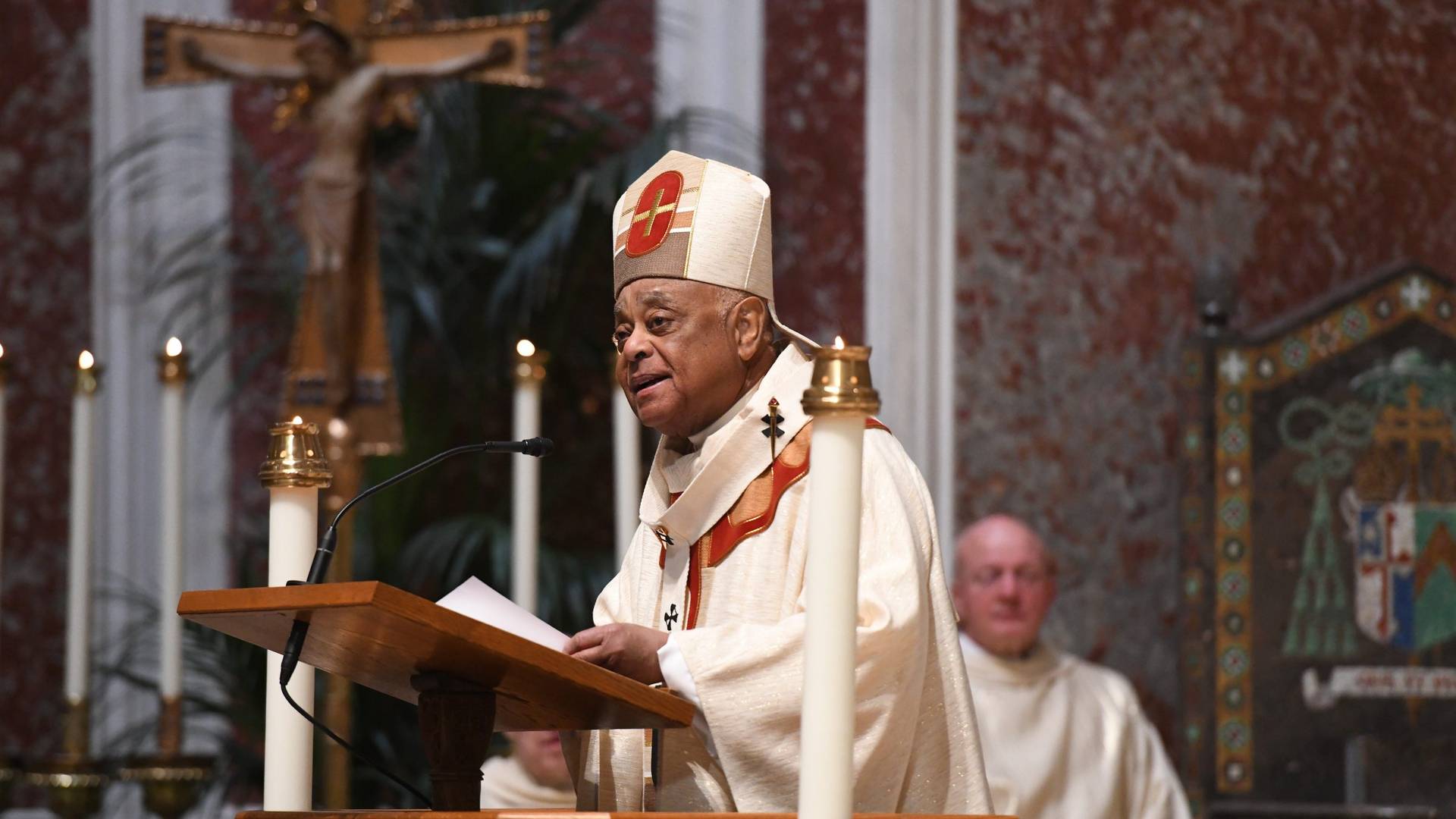[Editor’s Note: Geoffrey Keating is a fifth generation craftsman. Before founding Keating Woodworks, he earned graduate degrees in Theology from Yale University and the University of Notre Dame. His work has been featured in American Craft, Architectural Digest, 5280, Design Sponge, Architectural Digest Germany, This Old House, Apartment Therapy and elsewhere. He has often worked on the interiors of Catholic churches, and spoke to Charles Camosy about how his faith has influenced his craft.]
Camosy: As I’m sure you have been told way too many times, it is unusual for a former theologian to do the job you are doing. How do you approach your work differently? Especially, perhaps, when compared to architects or mill shops.
Keating: Sure, actually I’ve found there is a great deal of overlap between the two (woodworking and work in the academy). There are intense, long periods of silence in both, where the challenge is to lose oneself in the work and not in daily distractions. And both endeavors can be a grind. An obsessive attention to detail. There is a tedious quality to each that is both part of the challenge and the reward. So, certainly, the one vocation prepared me for the other in many ways.
But, specifically, in terms of my work as the founder of Sacred Spaces, the most immediate value I bring to the table, because of my background in theology, I think, is an understanding of the history and meaning of the liturgical elements that the space contains, as well as how that liturgy is supposed to function in that space. There are a thousand ways, when designing a church or the furnishings within it, that the project can go off the rails. I’m sure we can all think of examples (maybe even our home parish!). The challenge is to design a space that: in some meaningful way attempts to bear the weight of the mystery, allows the liturgy to function as intended, and which creates a place of real and authentic beauty where people can encounter God. My background in Theology is extremely helpful in this regard.
In terms of my background as a furniture maker, I think one way I approach my work differently than most architects, for instance, is that the first way I see a project is in three dimensions, and also in terms of the materials used to create it. Beginning in two dimensions with computer generated drawings, and then hiring a construction company or mill shop to build off of those, is typical in the industry, and the resultant spaces often feel as flat and lifeless as the drawings themselves. Whereas I start with maquettes, or even full-sized mock ups. Seeing things sculpturally, and having an intimate knowledge of the material itself, helps me see how a space will function and also how a piece will sit and work within that space. And then being able to create pieces that feel handmade and have a sense of life to them, rather than cold, impersonal pieces that feel mass produced or generic.
Your last project, as I understand it, was the near complete remodeling of a Catholic Church. It is difficult to imagine a more appropriate job for your vocation. Can you tell us about what went into that project? Especially, for you, as a whole person?
First of all, the project itself, from its inception to completion, was really a testament to the people of the parish. The original building was a 1922, Thomas MacLaren designed Spanish Mission Revival church that was in extreme disrepair. Just a really great building that was totally falling apart, and the people at the parish, led by their pastor, decided that they wanted to do more of a restoration than a remodel. And that they wanted to do it right. This is a working class parish, and they came together as a community and raised the necessary funds and then spent nine months worshipping in their gymnasium while the church was being rebuilt. It was just a great sign that when the will is there, even parishes with modest resources can come together and do what needs to be done to create a beautiful space for the whole community to enjoy.
So, towards the beginning of the process, they brought me on board and turned me loose on the interior. My team and I did the design and build on all the interior elements of the church. So we worked on everything from the architectural millwork and confessionals, to exterior doors and window treatments, to lighting, pews, and all the sanctuary furnishings. The goal was to create a space (unfortunately, most of the original pieces were gone) that, while taking into account certain practical considerations, felt like the 1922 original.
It was the type of project you just had to immerse yourself in, physically and mentally, with all your exertions directed at creating a meaningful, cohesive whole. One moment I would be working with my muralist on the details of mission style retablos, then I would be sanding pew seats and backs, then I would be sorting out the final touches on the altar reliquary. It was challenging, holding all that in tension while not losing sight of the final vision. Most days would start at 4:30 and end long after my kids had gone to bed, but I have a great team, my family was all in and extremely supportive, and we were really pleased with the results.
Can you say something about your favorite piece in that Church?
As a designer and woodworker, a lot of times the challenge is reigning yourself in, and not doing something just because you can, or because you want to flex your creative muscle or show off your technical expertise. It’s a matter of making sure that you put your effort into the service of the larger goal and not some smaller self-congratulatory flourish.
With a Spanish Mission style church, a lot of our effort went into making sure our hand-wrought pieces felt hand-wrought. There were these deceptively simple hand-made copper crosses that our metal smith made that were placed on all the pew caps and elsewhere in the nave and sanctuary. He cut them out and worked them by hand and made these small cut nails that held them in place. Once in place, they just felt at home in the space. When something hand-made is done really well it always looks better in person than in photos and that was definitely the case with these crosses.
We really wanted the space to feel like a group of artists, artisans, and craftspeople came together to make a space by hand for a community and for God, rather than that impersonal feeling you get when everything is ordered out of a catalogue, and all these copper crosses really went a long way to helping us achieve that goal.
Some social justice activists are concerned with the resources it takes to put art and beauty in our sacred spaces, especially in communities with economically vulnerable populations. How would you respond to such concerns?
I agree that it is definitely time to take serious stock of how we manage our resources. There is so much waste, so much energy that could be directed to more worthy ends rather than mindless consumption. However, building beautiful things well is really an exercise in conservation and in this case preservation. Art, beautifully designed handmade furnishings, and well-made buildings are intended to last for centuries, not to be added to the landfill after 30 years of use.
Culturally, we’ve created this desert where our public spaces (not just our sacred spaces) often feel lifeless, devoid of any beauty and real sensory experience. Think of it. How do you feel when you’re walking outside of a mall, sitting at the DMV, or at the Dentist’s office? You feel cold and lifeless. Part of it is certainly the reason for being there, but part of it is that the space is impersonal and soul-crushing, there’s nothing to gaze at, nothing you want to touch, nothing pleasing that catches your eye and speaks to its maker.
And many people desire to serve the poor after experiencing God and community in worship, so no, on the contrary, I think it’s time to double-down and invest more resources into our communities and our common spaces. Certainly, let’s create meaningful work and other opportunities, but let’s also create common spaces where people from all classes can come together, feel whole, and build meaningful relationships.
What are you plans or dreams for the future of Sacred Spaces?
Some of it is to continue to grow in such a way that what we do can be a bit of a haven for artists and artisans, and to enlarge the tent so to speak, so that others are encouraged to think that making things is a viable and meaningful way to make a living. But mainly, as a maker, I just want to continue to design and build. I’m currently in conversations about starting some new projects here in Colorado but also on the East Coast. Because of the handmade nature of what I do, some of it is making sure that the project is a good fit. But, yeah, I just want to be able to keep making.

















